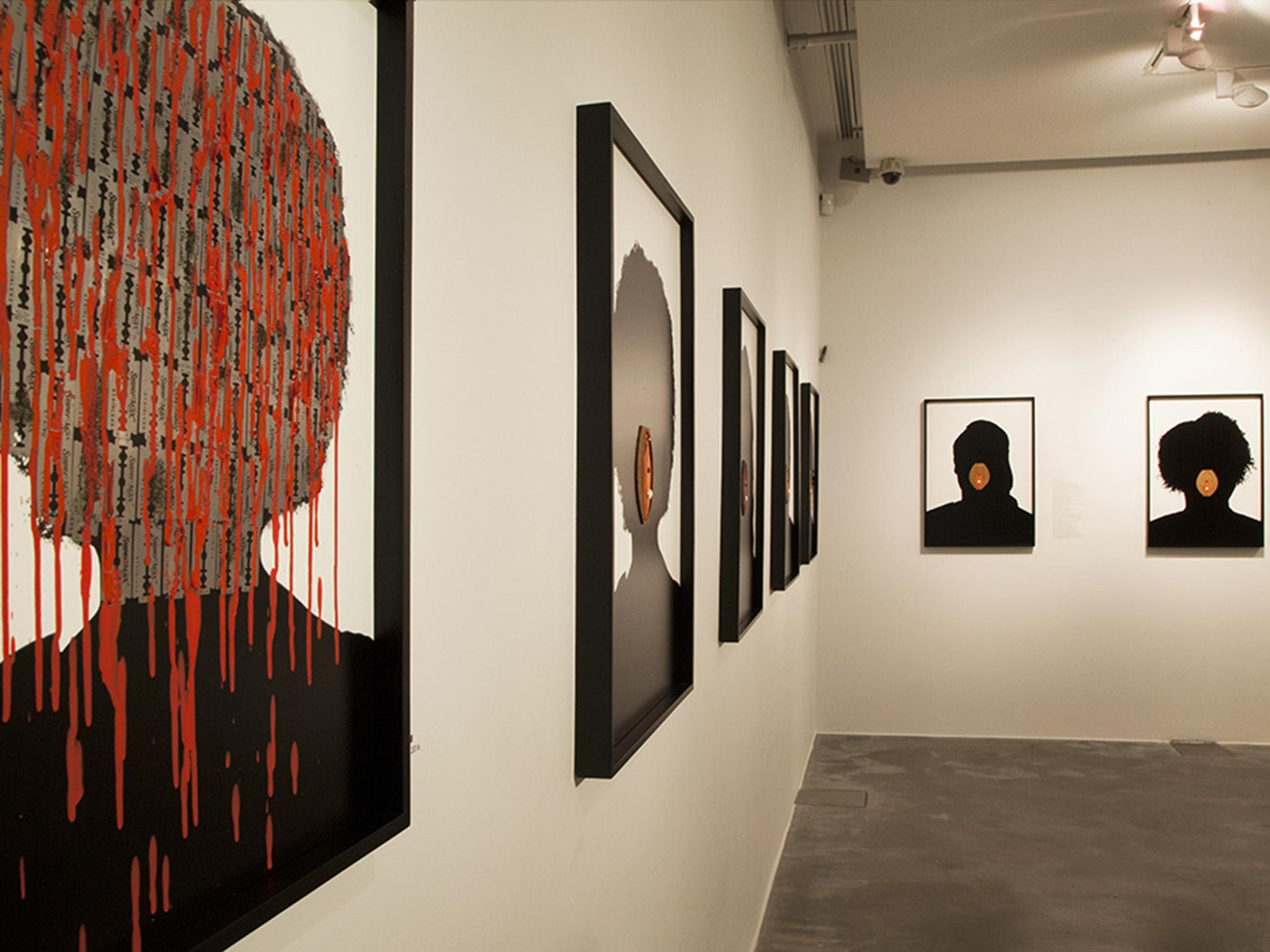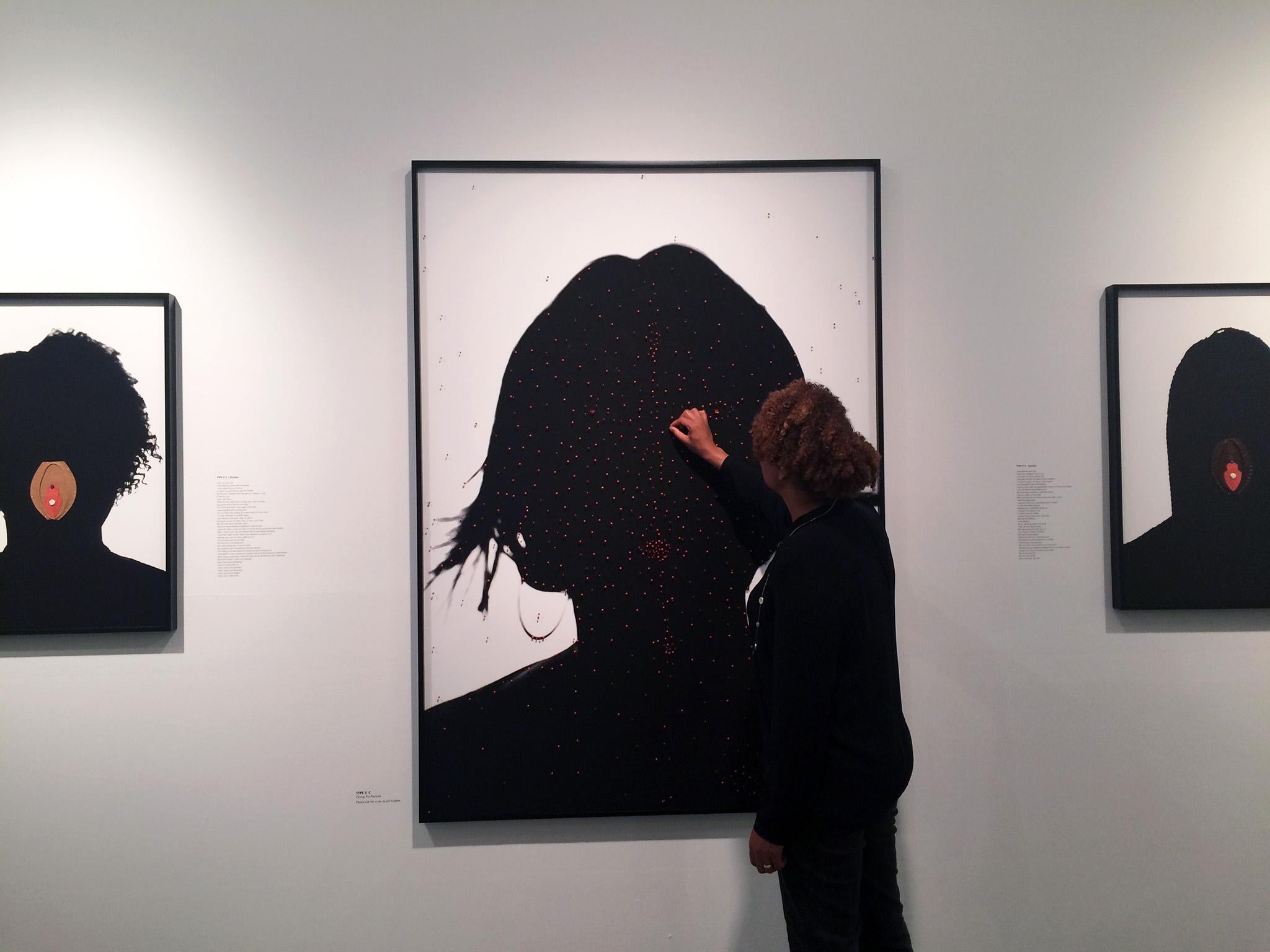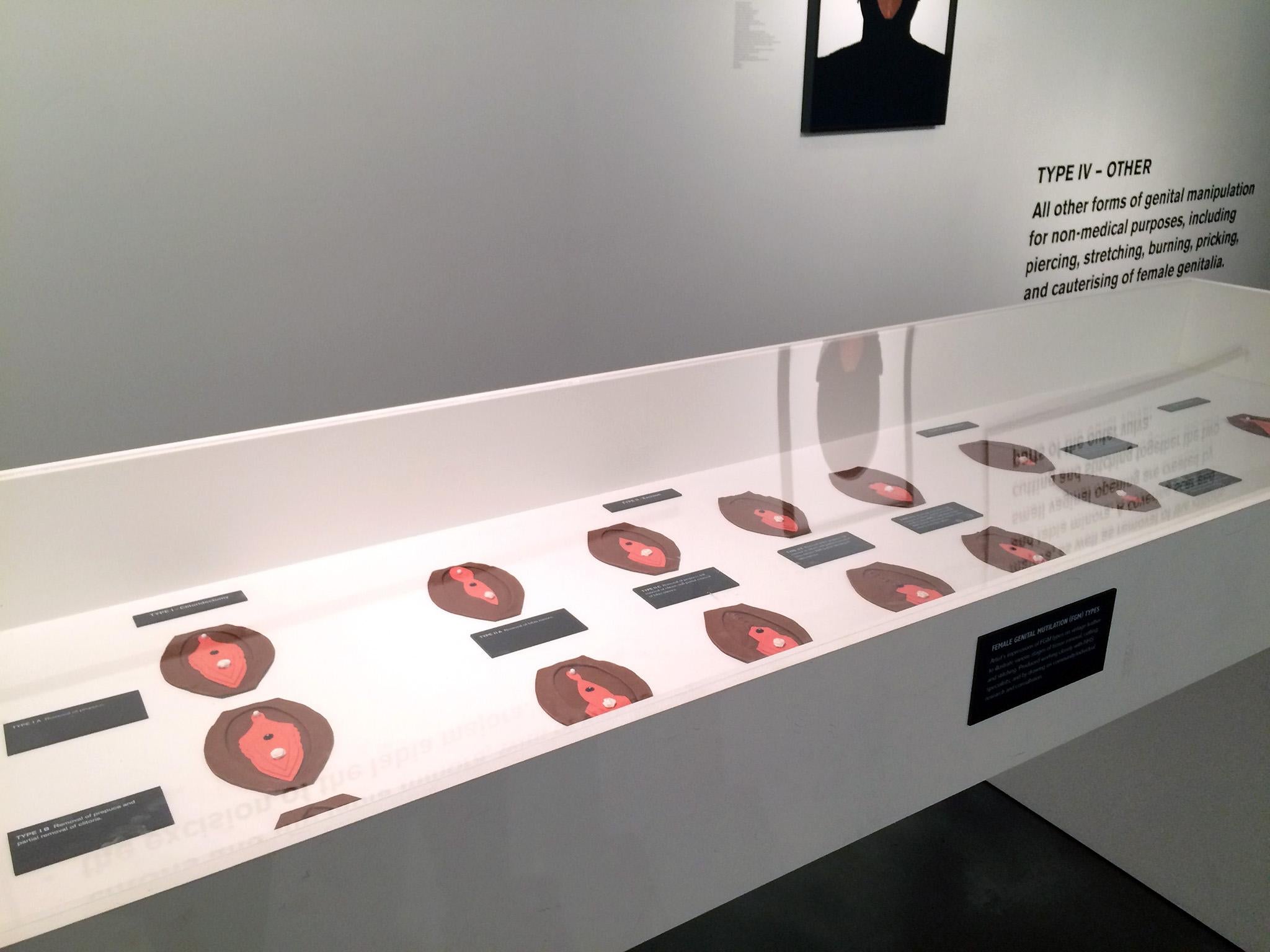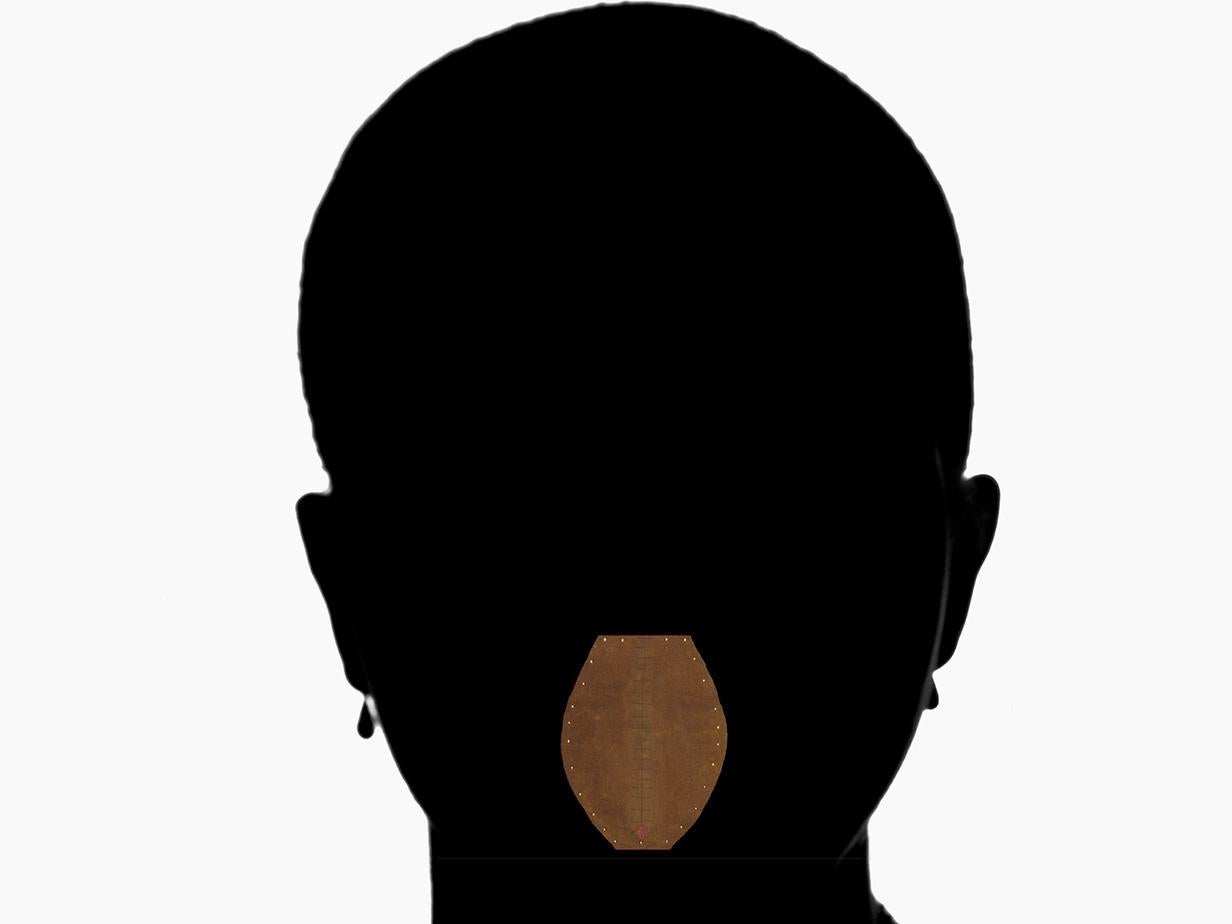The darkest shadows: How a London artist is shining a light on FGM
Aida Silvestri turned to art as a way to cope with her own experience with FGM. Now her work is being used to highlight the issue across London, writes Chantal Da Silva

"Unbearable" and "excruciating" – that is how a number of women featured in Aida Silvestri’s exhibit, Unsterile Clinic, describe the pain they were forced to endure as children. Each woman is a survivor of female genital mutilation, or FGM for short.
Their silhouettes are accompanied by leather patches showing exactly how their bodies have been permanently – and irreversibly – altered.
"I wanted to show what these women have lost and the complications that FGM brings," Silvestri says. "I chose leather because it’s also a piece of flesh that’s been cut."

But since embarking upon the project, Silvestri’s art work has done more to raise awareness around FGM than she could have possibly imagined.
After learning about her work, the London tri-borough (consisting of Westminister, Hammersmith and Fulham and Kensington and Chelsea councils) approached the Eritrean-born artist, asking to commission some of her leather patches to help raise awareness in London communities affected by FGM.
While the practise, which typically involves the removal or cutting of the labia and clitoris, was made illegal in the UK in 1985 and is considered child abuse, that hasn't stopped hundreds of cases from cropping up across the NHS in recent years.
Between January and March of this year alone, there were 1,242 newly-recorded cases of the practise, including occurrences involving 11 girls born in the UK, according to data from the Health and Social Care Information Centre.
The three councils have been able to use Silvestri’s artwork in NHS clinics to help women identify what type of FGM they might have undergone.
Silvestri has created a total of 16 leather pieces, each demonstrating a different type of FGM, including the most severe form, infibulation, which involves the complete cutting away of the clitoris and sewing up the vulva to make only a small hole for urine to pass through.
The artist’s placement of the leather patches over the mouths of her subjects is strategic, demonstrating the fact that the women had little or no say in getting the invasive procedure done.

Once patients see the leather patches, "they find it easier to understand what they’ve lost," says Silvestri.
"They have said things like, ‘no one has ever shown us or explained this to us properly’, so the pieces give them a three-dimensional visual and helps them diagnose themselves and understand what has happened."
Council staff have also commissioned Silvestri to create a board featuring the leather pieces with removable parts, so that they can show people what actually occurs during FGM.
“Response from the community and professionals has been overwhelmingly positive,” a council spokesman told The Independent. “For many women, it was the boards that helped them understand what exactly had happened to them.”
FGM is usually carried out on young girls between infancy and the age of 15, according to the NHS. The United Nations Population Fund estimates that 200 million women and girls around the world have been subjected to the practise, often without any consent or knowledge of what it entails.
In Silvestri’s photo project, participants describe eerily similar experiences of being woken up by family members and told they were going to "become a woman". Their ages at the time of the procedure range from four to 13 years old.
In each account, the women describe being held down and forced to endure unspeakable pain – a pain that has followed most of them into their adult years, making both sex and child birth excruciating experiences.
Often, the procedure is done by an elder in the community in unsanitary conditions, hence the title of Silvestri’s project, Unsterile Clinic.

It’s an experience that Silvestri shares, making her fight against FGM a personal battle. The fact that she is a survivor of the practise is something she says she pushed to the back of her mind for years, until she had a child of her own and was asked by doctors if she had undergone the procedure.
"I felt completely gutted. I thought my life has completely collapsed," Silvestri says. Once she was given a formal diagnosis and did more research on the practise, the full weight of what she had been forced to endure as a child – and the complications that she had come to accept as normal – came crashing down on the artist.
She says she hopes that with the aid of her art work, the tri-borough will be able to deter families from continuing the tradition.
"It needs to stop. This is everybody’s problem," Silvestri says.
"People think FGM is only to do with Africa. I just want to stress the point that no, it’s not. It’s in other places. Indonesia, Colombia, South America and now it’s coming to the UK. It’s in the UK already," she added.
"People are taking youngsters back home and they’re getting FGM."
London police and border officers are in the midst of a summer campaign against FGM. From 1 January to 8 August 2016 London police made eight arrests in connection with FGM-related offences, a police spokeswoman told The Independent.
The summertime has been referred to as the "cutting season", as school holidays are the most common time for girls in the UK to be taken abroad by their families to be subjected to mutilation.
In addition to the severe pain victims of FGM endure during the procedure and in the weeks that follow, those who undergo FGM often experience a range of long-term physical, sexual and psychological effects including chronic pain, frequent infections, decreased sexual enjoyment and post-traumatic stress disorder.
Aida Silvestri’s exhibit, Unsterile Clinic, runs until 17 September at the Rivington Place.
Join our commenting forum
Join thought-provoking conversations, follow other Independent readers and see their replies
Comments
Bookmark popover
Removed from bookmarks